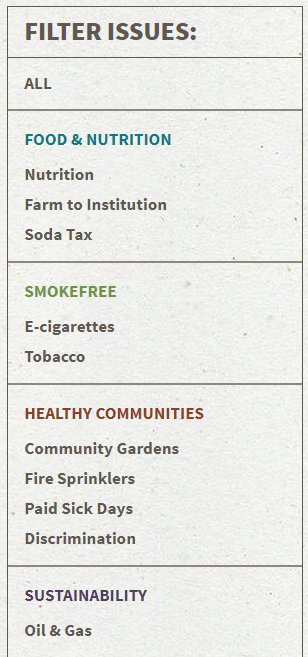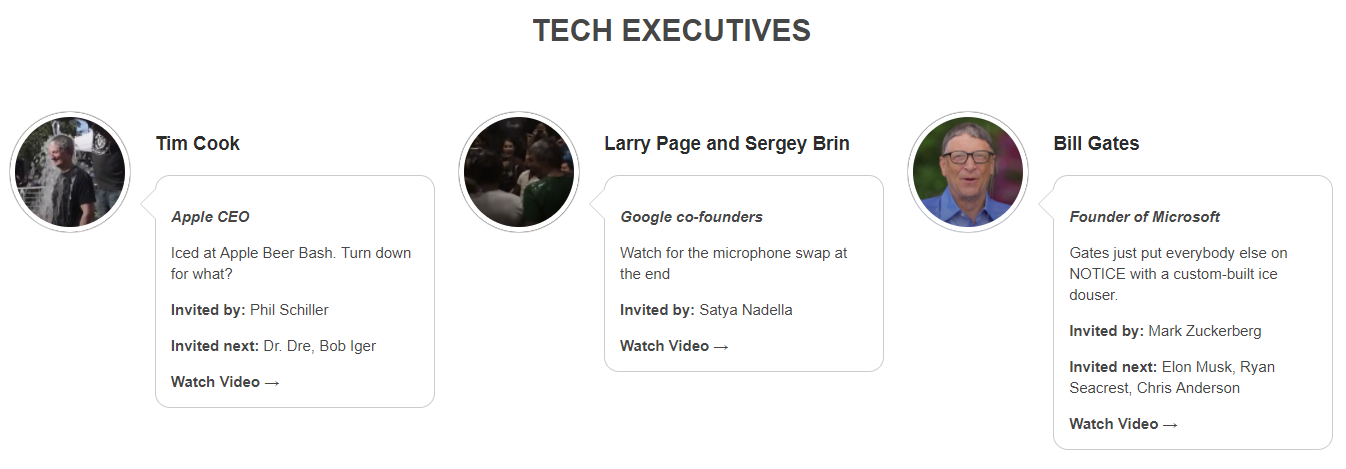Sometimes, your best marketing weapon has nothing to do with the amount of money you can pour into a campaign.
Most of the time, the focus is on creating effective ad campaigns or perfecting an email pitch that will reach a client.
But what if there was another way to build brands?
A way to boost your brand organically that had nothing to do with SEO?
I believe there is because I’ve experienced some impressive brand-building behemoths that started simple.
They started as grassroots campaigns.
And anyone can start a campaign this way.
In fact, it’s much more suited to the needs of smaller, sometimes local, brands.
I want to teach you a few methods you can use to start growing your brand with grassroots marketing.
You’ll learn creative ways to make and leverage captivating content that can start on a small scale.
But first, let’s take a close look at what grassroots marketing looks like when used effectively.
Can grassroots marketing really work?
People typically think of grassroots campaigns as something with a political agenda, like the Boulder, CO soda tax that was implemented in July of 2017.
And to their credit, that campaign did start as a grassroots movement due to some health-concerned citizens in the area.
Then after years of campaigning and steady growth, change happened in their community.
That’s just one example.
You can find a laundry list of issues just like this one in communities worldwide.
But because most people think of political or social movements when you mention the word “grassroots,” they neglect an entire area where their marketing could thrive.
So I want to show you how this approach can apply to your brand.
To start with, you have to understand that a grassroots campaign is focused on audience and intent.
Or to elaborate, grassroots marketing targets a highly niche group in an attempt to persuade that group to then spread your message organically.
Thus, you have your audience and intent.
But marketers don’t discuss grassroots ideas very often.
Nor do they really pay much attention to creating them around brands.
And it turns out there’s a reason behind this trend.
Grassroots marketing has a low degree of formality, which makes it incredibly easy to overlook from a branding standpoint.
The thing is, grassroots campaigns also carry a low degree of competition when a brand uses one.
And that means an effective campaign can go largely uncontested in terms of your audience’s attention.
And because of the smaller, more targeted audience, it’s much more cost-effective than a paid ad or content marketing campaign.
For small brands where resources are limited, cost-effectiveness is a big selling point.
Plus, smaller and highly-segmented audiences are typically harder to touch with traditional ad campaigns.
So building trust in your brand is next to impossible.
And when social trust and sustainability drive consumer spending, failure to reach these audiences can be devastating to a brand.
But a grassroots campaign checks all of these boxes, which means that anyone — even you — can use this method.
You maintain a limited budget.
You build a movement organically.
And, you create trust and social responsibility without coming across as “salesy.”
That’s a win, win, win.
So do you see how a grassroots marketing campaign can benefit your brand?
It’s the epitome of “big dreams that start small.”
Specifically targeted campaigns are suddenly much more viable for small brands.
And it allows you to capitalize on social trends and give your audience a direct and impactful interaction with your brand.
In short, it can open up new opportunities that may not be cost-effective otherwise.
Are you ready to start making your own grassroots campaign?
How to implement an effective grassroots campaign
Before we get much further, I want to point out the elephant in the room.
Grassroots campaigns are often confused with guerilla marketing, like this:
While this is a great idea and certainly helps this brand, it doesn’t quite meet the criteria of a grassroots campaign.
Guerilla marketing efforts focus on establishing creative and branded disruptions that catch the eye.
But as we’ve already seen, grassroots campaigns are based on social sharing, building interest, and usually have a more campaign-like feel.
This promotion is good, but the downside is that it’s static and ultimately just a one-off.
So don’t get ahead of yourself here.
Look for ideas that can be shared and spread instead of brainstorming a dead-end promotion.
But before you even start coming up with ideas, you need to get to know your audience first.
Remember that your initial efforts should target a niche group that will already be interested in your campaign.
The better you know your target demographic, the more suited your content will be to take hold.
So start by developing personas, uncovering pain points, and finding influencers in your niche.
This will provide direction for the content you end up creating.
And it will open up potential areas for outreach when you start sharing your campaign.
Then once you’ve determined your audience, start creating the actual content that you’ll be sharing as a part of your grassroots efforts.
Do your best to make your campaign and information accessible and user-friendly
And make sure it’s easy to participate on mobile, desktop, and tablet.
You don’t know how your audience will engage with your campaign, so it pays to be prepared for every device.
The ultimate point is to optimize the shareability of your content.
Creating something that easily works for mobile and desktop will get you better results every time.
And creating visual content will help you as well.
Why is that?
Because visual content gets shared more often.
Which means a grassroots campaign that relies on social sharing needs to be as visual as possible.
And finally, when you’re ready to start sharing your content, you have to remember that it’s best to engage in steps.
Don’t try to do everything all at once.
You wouldn’t ask someone you just met to help you move into a new apartment.
So why would you ask a stranger to start a grassroots campaign?
Start by reaching out to your circle of contacts first, especially ones in your target niche.
Even a few actions by individuals who are already involved in your community can snowball into something big.
Then, move on to your existing digital audience, or take some time to build one on social media.
Just remember to focus on long-term engagement.
It’s tempting to want results to come pouring in quickly.
But it’s more likely that your campaign will take months, or even years, to reach fruition.
Be patient, share your passion, and keep on plugging away.
If the campaign is audience-appropriate, you’ll eventually start to see results come in with minimal effort on your part.
But there’s a deeper question that needs to be answered here.
What types of campaign ideas actually work?
That’s what I want to help address in the rest of this post.
I want to give you eight ironclad ideas that you can use to create your own grassroots campaign.
Let’s start by tapping into your audience’s emotions.
Campaign Idea #1: Target emotions
Human beings make decisions off of emotions.
Marketers and entrepreneurs have been creating emotionally driven content and campaigns since the dawn of marketing.
And for a good reason.
Powerful emotions and storytelling will help drive engagement with your brand and grow the organic spread of your content.
And leveraging emotional storytelling in a grassroots campaign has been proven to affect the brain differently.
Most notably, the brain releases dopamine when it experiences an emotionally-charged story.
That means it’s easier for consumers to remember your brand once they’ve consumed your content.
And the emotion engages your brain’s cortex, which makes it easier to recall and engage with.
Take this touching example that the airliner WestJet created during the holiday season of 2013.
WestJet took the opportunity to capitalize on emotions both simple and complex to create a message that people want to share.
They included adorable children, stressed adults, and spared no expense on filling the unknown requests of their recipients.
I still have a hard time watching the ending without getting a little teary-eyed.
The result was a staggering 48 million views (and counting!).
Wouldn’t you want to share a video like this?
The positivity is simply overwhelming.
And WestJet isn’t even in the rankings in terms of fleet size, which makes them a relatively “small” brand in this instance.
So take a page out of WestJet’s book and find a way to leverage positive emotions from a campaign.
It might take some careful planning and execution, but the results can be overwhelming.
Campaign Idea #2: Jump in on a trend
Trends rise and fall with an incredible degree of swiftness these days.
Just monitor the Redditors over on r/MemeEconomy for a week and you’ll experience how quickly the Internet will pick up a trend, chew it up, and then spit it out.
But you can sometimes use this vicious cycle to your advantage.
All you have to do is find a trend to jump on while it’s in the early stages of adoption.
Take Wendy’s for example.
They recently dropped a hip-hop mixtape without much preamble that has stirred up emotions within both the food and music industries.
News organizations were covering it, content creators started discussing it, and it even made it into the top 100 on iTunes.
Why did all of this happen?
Wendy’s went out on a limb and attempted to capitalize on current musical trends.
It was unique enough to stand out and good enough to actually warrant sharing.
And the results have been impressive.
All because they took a chance on a trend and executed it well.
So while you might not be able to drop a hot mixtape, you can probably tag along with a trend that will stir up your industry.
With the proper execution, you can see results just like this.
Campaign Idea #3: Pull a cool stunt
There will be times when you come up with an outlandish idea that doesn’t really fit into a marketing category.
How can you leverage those ideas in a way that still promotes your brand?
Try creating a stunt that’s so good your audience will have to share.
And who better to go all in with a grassroots stunt than Red Bull?
Red Bull’s YouTube channel is a virtual goldmine of crazy stunts and high-flying adventure.
Their years of grassroots efforts have made them a byword of the extreme sporting world.
They have a laundry list of videos that have been shared throughout the Internet with their branding, like this one entitled “A Door in the Sky.”
While it’s barely over 200,000 views on YouTube, the video has actually been shared 2.7 million times on Facebook.
And even if it might make your palms a little sweaty to watch a death-defying stunt like this, it’s undeniably shareworthy.
Stunts like this are part of the formula that has morphed Red Bull from a simple energy drink company into a sponsorship behemoth in the sporting industry.
So while you may not have the resources to use a wingsuit to jump into a plane, there are other ways to create stunts like this that show off the uniqueness of your brand.
As long as it’s shareworthy, a grassroots marketing stunt can create a huge splash.
Campaign Idea #4: Start a movement
Sometimes all it takes is a few brave souls to share something that starts a worldwide trend.
You might think that your brand isn’t big enough to start a movement, but keep the ALS Ice Bucket Challenge in mind before you count yourself out.
Allegedly, all it took was one post by former baseball player Pete Frates, who has ALS himself, to start the Ice Bucket Challenge.
The resulting social media avalanche grew into a staggering movement that raised $115 million for research.
What’s more, the Challenge even gathered a huge list of celebrity participation that included the likes of Bill Gates:
Even Tesla CEO Elon Musk joined in.
Along with Amazon CEO Jeff Bezos.
Pre-2014, most Americans likely didn’t even know the ALS Association even existed.
Even if they had heard of Lou Gehrig’s Disease, they probably didn’t feel any obligation to give to research unless they had a friend or family member who was affected.
But by leveraging a mixture of high-profile individuals and explosive social sharing, the ALS Association tripled their research budget and developed two new drugs for clinical trials.
They started a movement that’s still making a difference, and so can you.
All it takes is the right motivation and a little social sharing.
Campaign Idea #5: Support a cause
In the same vein, taking the opportunity to support a cause outside your brand is a great way to further your image as being authentic, caring, and generous.
For example, the Susan G. Komen Race for the Cure has an impressive list of sponsors that have backed them for more than two decades.
While this is a fairly simple outreach method, it’s an effective way to target specific communities that are linked to areas of extreme need.
In this instance, these brands are supporting cancer research and promoting healthy lifestyles.
So if your niche knows that you support causes that match their interests, they’re more likely to view your brand favorably in the long run.
Many brands choose to partner with a local shelter, charity, or organization to help improve their community.
Whatever cause you choose to support, just make sure that it applies to your audience.
The more you share with your engaged community, the more they’ll tell their friends and family.
Campaign Idea #6: Flirt with controversy
Since social sharing is a vital part of an organic grassroots campaign, flirting with controversy sometimes can get you the results you want.
While most of us try to stay away from controversy, it can create a social frenzy with your brand at the center.
A great example of how a controversial idea can be executed favorably comes from Dove’s Choose Beautiful campaign.
Here’s the video they shared:
This clip generated over nine million views, and you can just scroll through the comments to see how powerful of a reaction it generated.
But it also touches deeply on a hot-button issue, namely women’s self-image and the way society categorizes them.
Even if these issues are subconscious, they pack a punch and are worth discussing.
The key to controversy is to be very careful when you turn it into a campaign.
If you poorly word or misrepresent an idea, it could leave an irremovable stain on your brand.
Simply try to provoke thought.
And leave your audience with a positive message overall.
As long as you’re not too negative, your campaign can generate shares and conversations that will help you in the long run.
Campaign Idea #7: Collaborate
Just because you don’t have enough resources to create a project by yourself doesn’t mean you don’t have options.
In many instances, finding a team to collaborate with on a project can put you in front of a larger audience and help you create a higher-quality piece of content.
One recent example I saw of this in a very niche group was a collaboration on YouTube called “Men of ASMR.”
If you’re unfamiliar with ASMR, it’s simply a non-scientific acronym for a sensation that many people feel while listening to soft sounds or when they receive personal attention.
In recent years, YouTube has fostered an explosion of content creators that make videos for people who want help to feel this sensation and relax.
The thing is, the majority of the more well-known YouTubers are women.
Thus, the creation of this collaboration.
On one of the more well-known channels, 29 male artists collaborated to make a video that’s over an hour and a half long. That is something of a feat for YouTube.
The result was that this group of YouTubers got 1.3 million views in under two weeks.
That’s impressive for some of the smaller channels on that list who would otherwise have struggled to achieve that many views.
It also provided a wider audience for these content creators to promote themselves, which means more views on their individual channels.
While this is a unique illustration, it’s a great example of how a collaboration of smaller brands can create a large splash when they work together.
Consider other businesses in your area or industry that you could collaborate with, and then create a piece of content that can’t be ignored.
Campaign Idea #8: Do something for free
The final idea I want to share with you is to simply give something away.
Often, giving away a product or service for free is the perfect climax for a grassroots campaign.
It’s a way you can support your audience or community with something that’s tangible and valuable.
And when you do it right, you plant seeds that can one day lead to impressive results.
One recent example of this comes from the LaundryCares Foundation.
The LaundryCares Foundation is a nationwide organization that holds free laundry days in cities around the US.
It aims to use these days to not only let you do your laundry but also to help low-income families and promote education.
These events are used to build communities and help laundry owners give back in a way that truly touches their customers’ lives.
The foundation even encourages independent laundry owners to join in for their own communities, thus snowballing their efforts over time.
It’s even started using video to help spread the ideas and build awareness of the foundation’s efforts:
So while this is a younger grassroots effort, it’s a great example of how you can use a free gift as the basis of a larger effort.
And while you may not be able to attach yourself to a larger organization, you can still promote this on a smaller scale.
Just make sure you can actually afford what you’re giving away, and don’t overreach.
Your customers will love you for it, and they’ll tell their friends the next time you hold an event like this.
Conclusion
You don’t need a massive marketing budget to start seeing results.
All you need is a little ingenuity and a lot of patience.
Grassroots marketing has the potential to create some massive buzz that’s centered around your business, and it can happen with minimal effort.
As long as you begin by targeting a specific audience and have a specific intent for your niche, you can create an actionable organic campaign with minimal effort.
You can tap into emotions, take advantage of a popular trend, or create a shareworthy stunt that grabs your audience’s attention.
With the right approach, you could even start a movement like the ALS Ice Bucket Challenge.
Or, you could find a cause that’s already got momentum and support it. Your contribution will help the movement and your brand will grow over time.
If you’re brave, try flirting with controversy.
As long as you’re balanced and positive, you can create a conversation around your brand that will last for years.
But if you lack resources, consider a collaboration or giveaway.
The publicity you gain from either of these can spread awareness of your brand and help generate more customers over time.
However you go about starting a grassroots movement, just remember that it’s feasible for anyone to achieve good results.
It is a long-term plan, but it can serve your brand extremely well in the years to come.
What grassroots campaigns have stood out for you?



















Comments (10)